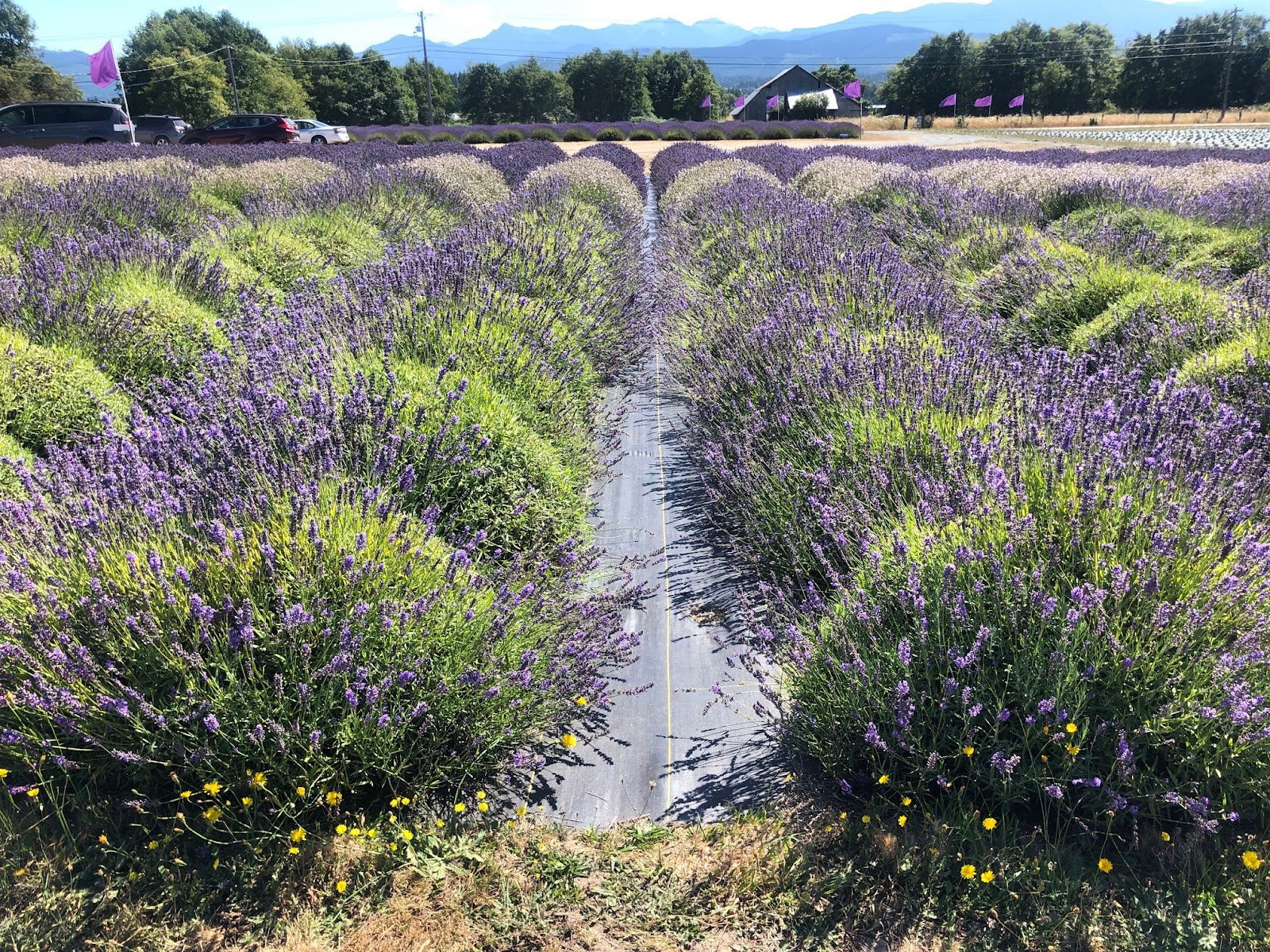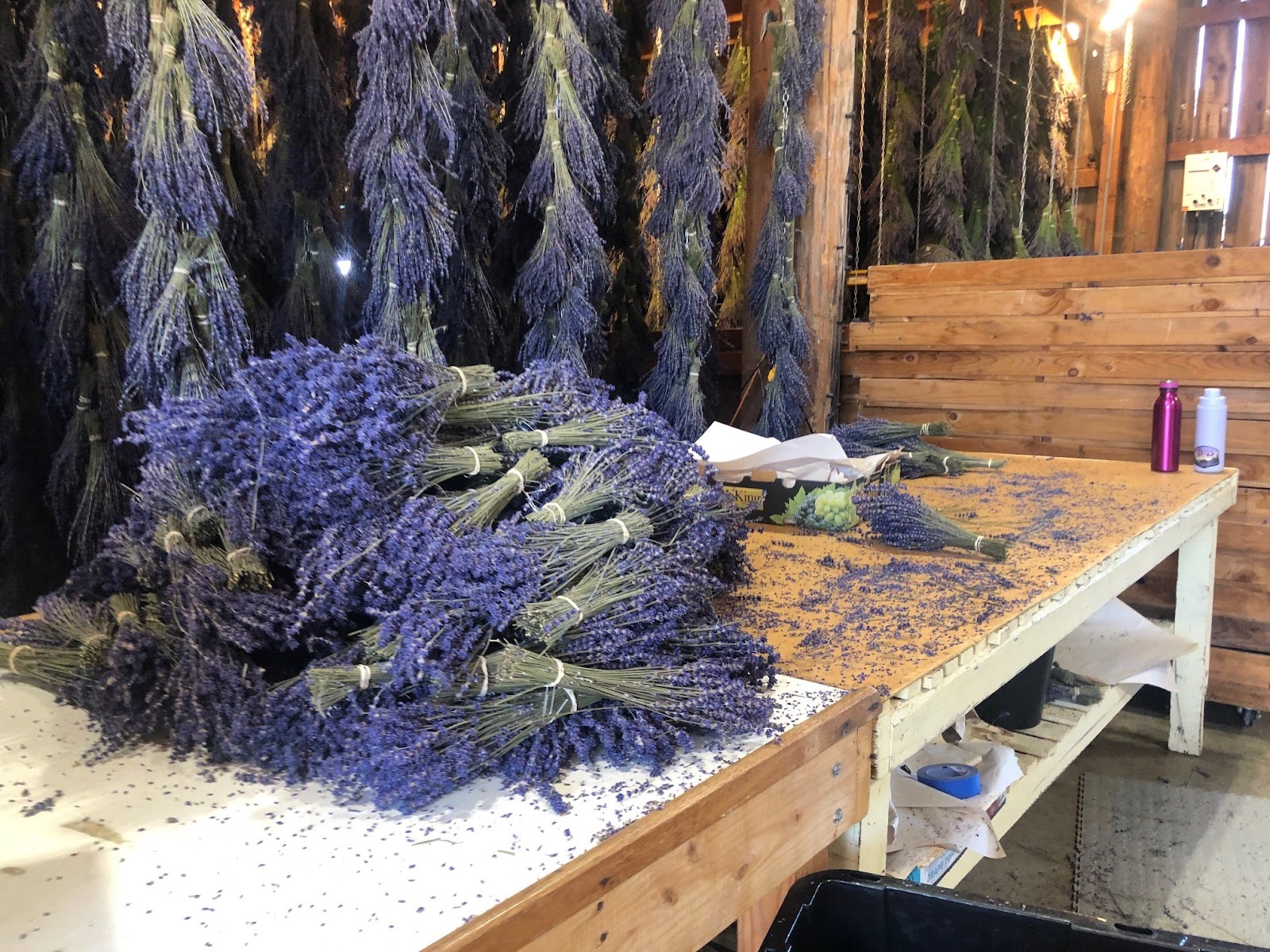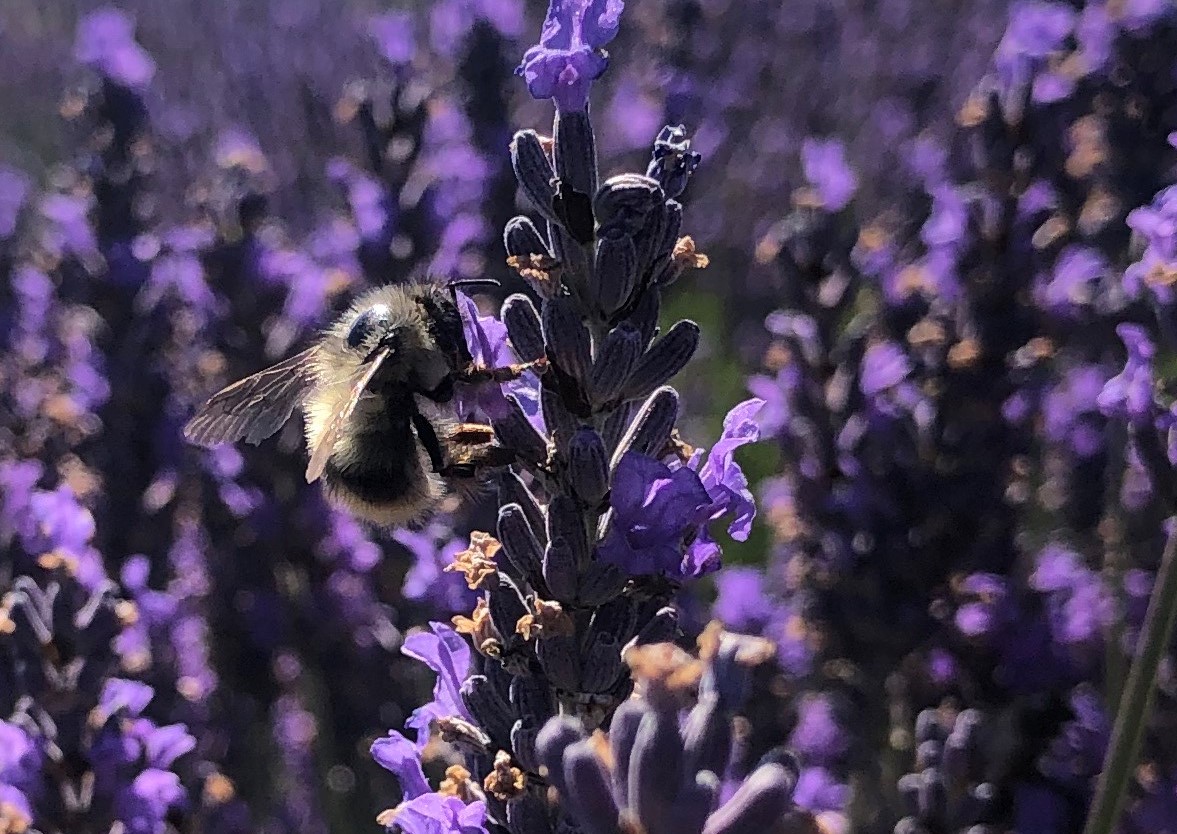Posted by: Lisa Mason, Arapahoe County Extension
I traveled to the State of Washington last week to visit
Olympic National Park and drove through Sequim, WA (pronounced “Squim”).
Located along the northern coast of the Olympic Peninsula, this town is famous
for the Sequim Lavender Experience,
an agritourist co-op of small, family-owned lavender farms.
I toured one of the lavender farms, and as soon as I stepped
out of the car, the first thing I noticed was the light, fresh scent of
lavender in the air. The farm had approximately 12 acres of lavender fields
comprising of varieties of purple and white. When looking at the flowers up
close, we heard the constant sound of buzzing from honey bees and bumble bees
hard at work pollinating the flowers.
 |
| Lavender fields in Sequim, WA. |
 |
| Drying lavender. |
 |
| Harvesting lavender. |
Lavender is a plant in the Lavendula genus in the Lamiaceae plant family, also known as the
mint family. Lamiaceae plants are easily identified because most have square
stems. Many of the plants are herbaceous, have opposite leaves, and whorled
spikes. Leaves and flowers tend to be fragrant. The genus Lavendula has about 45 plant species and more than 450 varieties (UT Institute
of Agriculture, 2022). Lavender is native to Europe, specifically the
Mediterranean area.
English lavender (Lavandula angustifolia) is an excellent species to grow in Colorado. A wide variety of cultivars are available that differ in size and shades of violet and white. Lavandin plants are another excellent option for Colorado. Lavandins are a hybrid between two lavender species: Lavandula angustifolia and Lavandula latifolia. Essential oils can be extracted from any lavender plant, but lavandin plants tend to yield higher amounts of oil.
 |
| A bumble bee (Bombus sp.) pollinating a lavender plant. |
Lavandins and English lavender grow well in USDA Hardiness
Zones 5-7. They grow best in full sun and in alkaline and well-draining soils.
Once established, lavender can be a great drought-tolerant, and pollinator
friendly plant attracting bumble bees and honey bees. Generally, they do not
have any pest problems. Refer to Table 1
to learn more about cultivars.
To learn more about planting, growing, and harvesting lavender, check out the following links:
All photos were taken by Lisa Mason at the B&B Family Lavender Farm.

No comments:
Post a Comment